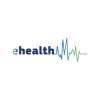The Health-e-Child project aims at developing an integrated healthcare platform for European pediatrics, providing seamless integration of traditional and emerging sources of biomedical information. The long-term goal of the project is to provide uninhibited access to universal biomedical knowledge repositories for personalised and preventive healthcare, large-scale information-based biomedical research and training, and informed policy making. The Health-e-Child project focus will be on individualised disease prevention, screening, early diagnosis, therapy and follow-up of pediatric heart diseases, inflammatory diseases, and brain tumors. The project will build a Grid-enabled European network of leading clinical centres that will share and annotate biomedical data, validate systems clinically, and diffuse clinical excellence across Europe by setting up new technologies, clinical workflows, and standard
Policy Context
There is a compelling demand for the integration and exploitation of heterogeneous biomedical information for improved clinical practice, medical research, and personalised healthcare for the citizens of the EU. Objectives: - To gain a comprehensive view of a child's health by vertically integrating biomedical data, information, and knowledge, that spans the entire spectrum from genetic to clinical to epidemiological; - To develop a biomedical information platform, supported by sophisticated and robust search, optimisation, and matching techniques for heterogeneous information, empowered by the Grid; - To build enabling tools and services on top of the Health-e-Child platform, that will lead to innovative and better healthcare solutions in Europe: - Integrated disease models exploiting all available information levels; - Database-guided biomedical decision support systems provisioning novel clinical practices and personalised healthcare for children; - Large-scale, cross-modality, and longitudinal information fusion and data mining for biomedical knowledge discovery.Technology solution
Technology choice: Standards-based technology, Mainly (or only) open standardsMain results, benefits and impacts
To ensure its impact, the Health-e-Child project will carry out various networking activities, beyond the provision of the system and its underlying research. An important part of the networking activities as well as of the general project strategy will be the establishment of strong liaisons with other national and international research initiatives. Added value will be achieved by carrying out the project at a broad European level. Health-e-Child is working to produce a universal biomedical knowledge repository and communication conduit for the future, a common vehicle by which all clinicians will access, analyse, evaluate, enhance and exchange biomedical data of all forms. HeC aims to bridge the gap between what is current practice and what the needs for modern health provision and research will be. Ultimately, with the HeC system, information will have no conceptual, logical, physical, temporal or personal borders or barriers. It will be available to all professionals who are interested and have the appropriate level of clearance.Return on investment
Return on investment: Not applicable / Not availableLessons learnt
Although still at a prototype stage, the Health-e-Child platform promises to have substantial impacts on: - Health care strategies, by enhancing the level and quality of medical services offered in Europe, significantly advancing medical research beyond what is traditionally possible and improving the competitiveness in the area of medical service provision and facilitating the adoption of new policies in member states; - Technology development, by bringing forward information-based medical technology and integration of mostly separate areas, i.e., vertical information integration, advanced medical querying, grid infrastructures, disease modelling, medical imaging, knowledge discovery and data mining, and decision support; - Society and economy, by improving the success rate in resolving difficult medical cases, thereby saving children's lives. Furthermore, such improved medical decision making will often result in lowering medical costs and/or treatment duration. Scope: International
Login or
create an account to comment.

